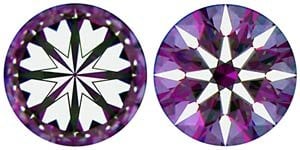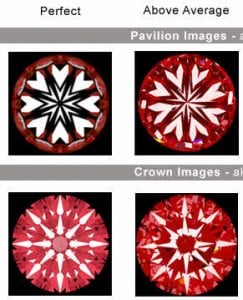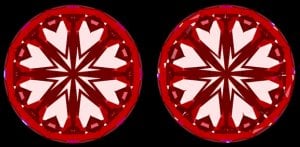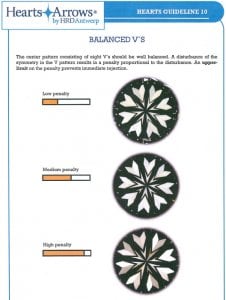Hello everyone,
In an effort to better understand the impact optical symmetry plays on the performance of a diamond I have decided to create a new post. This is largely in response to a less that optimal image with a diamond I was/am considering. I wanted to bring this into a separate topic in case anyone has insight into this but normally doesn’t pay attention to the countless "compare these diamonds" threads.
It seems pricescopes evaluation is extremely strict (which is great and as it should be), and looking at most if not all of the H&A on JA and WF in the carat range .50 - .70 would not pass as true H&A. Looking at the comparison chart on Highperformancediamonds suggests basically all of the H&A advertised would fall below the Perfect and well above Above - Average. Is this an artifact of the difficulty of cutting perfect symmetry increasing as size decreases?
In terms of performance what does this translate to?
Consider the case with 2 AGS Ideal 000 diamonds:
Would a perfect cut be distinguishable with the eye versus Above-Average cut? What about a perfect cut versus the majority of H&A for sale?
Would a non-perfect heart still be considered a top performer compared to non H&A diamonds given similar proportions?
Thank you for your input,
D
Another example is seen here: http://www.goodoldgold.com/4Cs/NewCutGrading/OpticalSymmetry/
This example of H&A looks much more in line with the majority of cuts I have seen, but would be regarded as less than Perfect or perhaps even not a true H&A by pricescopes(Brian Gavin's) definition.











300x240.png)